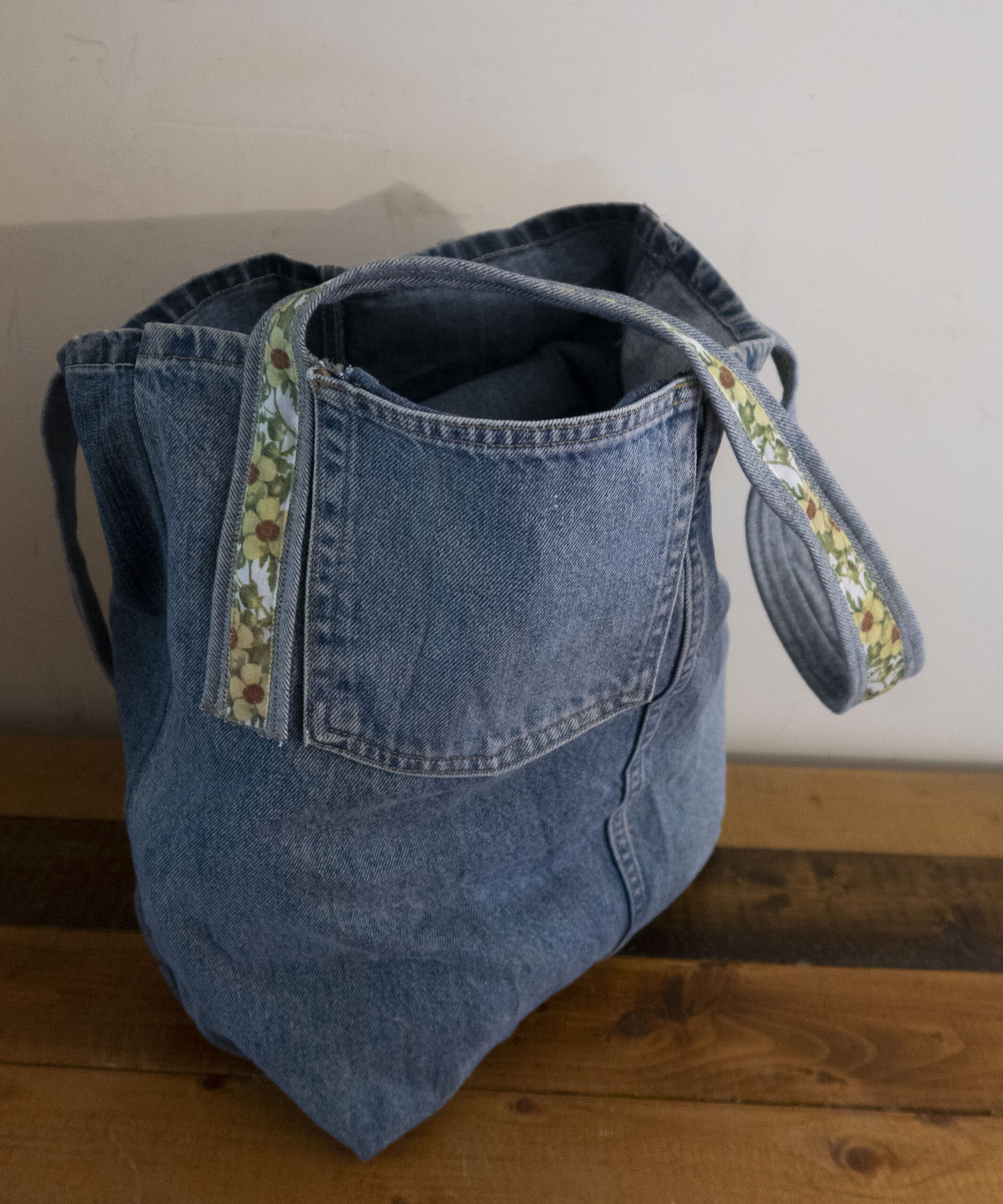Everyone loves a trendy tote — how else will you carry your newspaper to the kitchen or dress up your look for your next trip to the front porch?
At present, our reusable totes and sacks are languishing by the door or in our cars, while we get our curb-side purchases in plastic.
In preparation for a return to normalcy, we can take DIY bags up a notch by upcycling unwanted clothing into totes and bags, not only with future shopping in mind, but also to hold things around the house and to harvest from the gardens so many people are planting.
A quick online search will find you lots of bag patterns. Instead of scouring the internet for the perfect pattern to order or print, look at the bags around the house and see how they are made. Make a simple pattern by taking apart a paper or even a plastic bag to use as a pattern and template.
From over-alls to carry-alls, jeans are great for upcycling. The sturdy fabric holds up well and pockets or decorative patches can hide holes or reinforce worn spots.
Canvas fabric also wears well as bags, and yardage can be bought in a variety of colors and patterns. Pre-quilted and upholstery fabric makes trendy totes. Lighter weight fabrics work for lighter loads — think produce bags when buying greens or other fresh produce.
For more rugged or specialized needs, contract sewing services can transform sturdy fabrics into practical and reliable bags or cases. Whether it’s a tough tool bag or something unique for your need, experts in sewing can help bring your ideas to life.
Companies like https://www.fieldtexcases.com/ specialize in crafting durable and customizable sewn products, making them a great option for both personal projects and bulk orders.
Custom sewing also means you can choose the perfect materials and features to match your needs. From reinforced seams for extra strength to water-resistant finishes for added protection, the possibilities are endless.
If you’re aiming for style, function, or both, these services ensure your designs are as practical as they are unique.
To get started on a regular sized tote bag, take a paper grocery bag, a pair of unloved jeans, fabric scissors and set up a sewing machine with a jeans needle and thread in a color of your choice.
Take the bag apart. Once you unfold the bag, you will find it’s just a solid rectangle with a few strategic slits along the bottom so the folds fit together neatly.
Cut fabric and assemble pieces to make a rectangle that fits the pattern. Sew the pieces (outsides facing together, to hide the raw edge of the seams inside) to make a rectangle.
Cut slits at the spacing and depth of those on the paper bag.
Sew up shorter sides, making the rectangle into a tube.
While the bag is inside out, sew together the bottom edge, leaving the corners open.
Following the folds of the paper bag, arrange and pin the corners of the cloth bag, then sew — sewing a seam twice over for strength is never a bad move when making a sturdy tote.
You can cut straps out of the jeans or use other up-cycled material (braiding can give strength to flimsier fabric). Make straps by sewing long sides of two strips of fabric together, turning right sides out, and sewing onto the bags at your desired placement and length. Attach the straps at the top, or sew straps all the way down the sides of the bag for added strength. Add ribbon or other embellishment for fun.
If you want a lined bag, follow the pattern again, in a lighter weight fabric, and place inside with wrong sides together (so finished seams are showing on the lining inside, and outside of the bag). Tuck edges together inside, pin and sew around the top edge to connect bag and lining.
Instead of following a paper bag pattern, you can also make the bottom out of a separate fabric rectangle, sewing it to the square or rectangular sides. Fold up the bottom corners, sewing inside or outside the bag to create a wide base.

Make an origami tote bag by folding a fabric rectangle on the bias (diagonally) in the center to create a right angle on the inner edges of the fabric, then fold outer corners in to create two triangles, with right sides of fabric facing in, and stitch overlapping edges together. Attach a short or long handle.
Scraps can be patch-worked together for a fun effect and can use up smaller pieces of fabric.
DIY bags are customizable, and a great way to kick-off a return to eco-friendly personal habits once life goes back to normal.
By Aldona Bird




